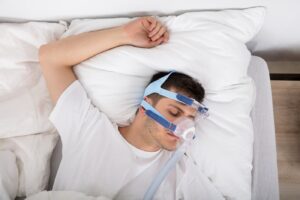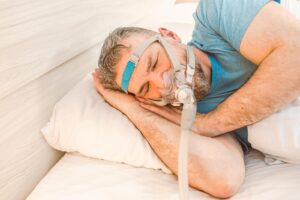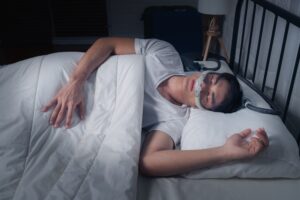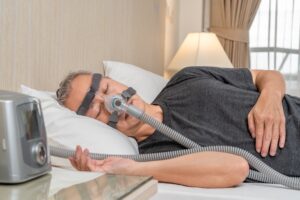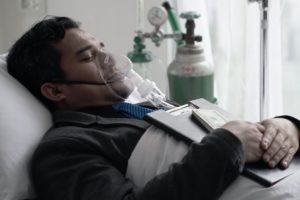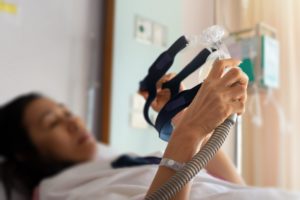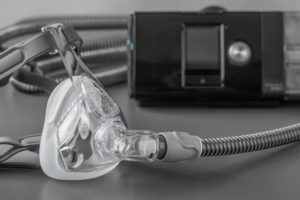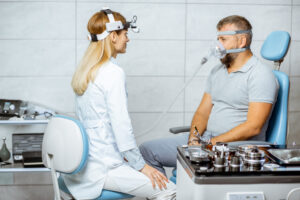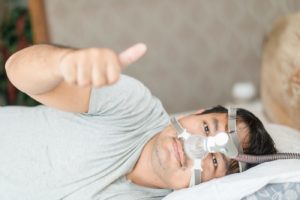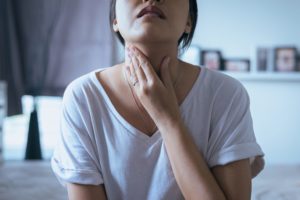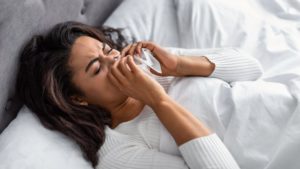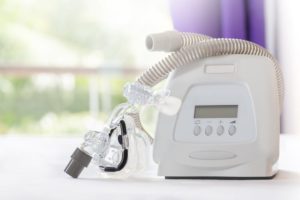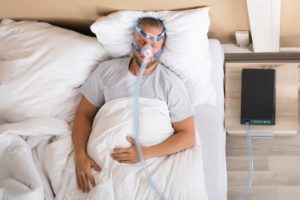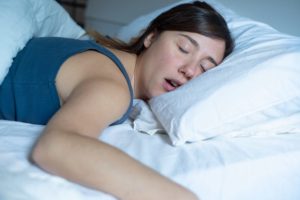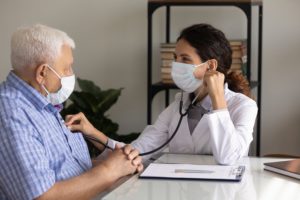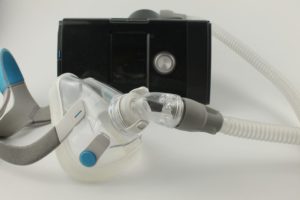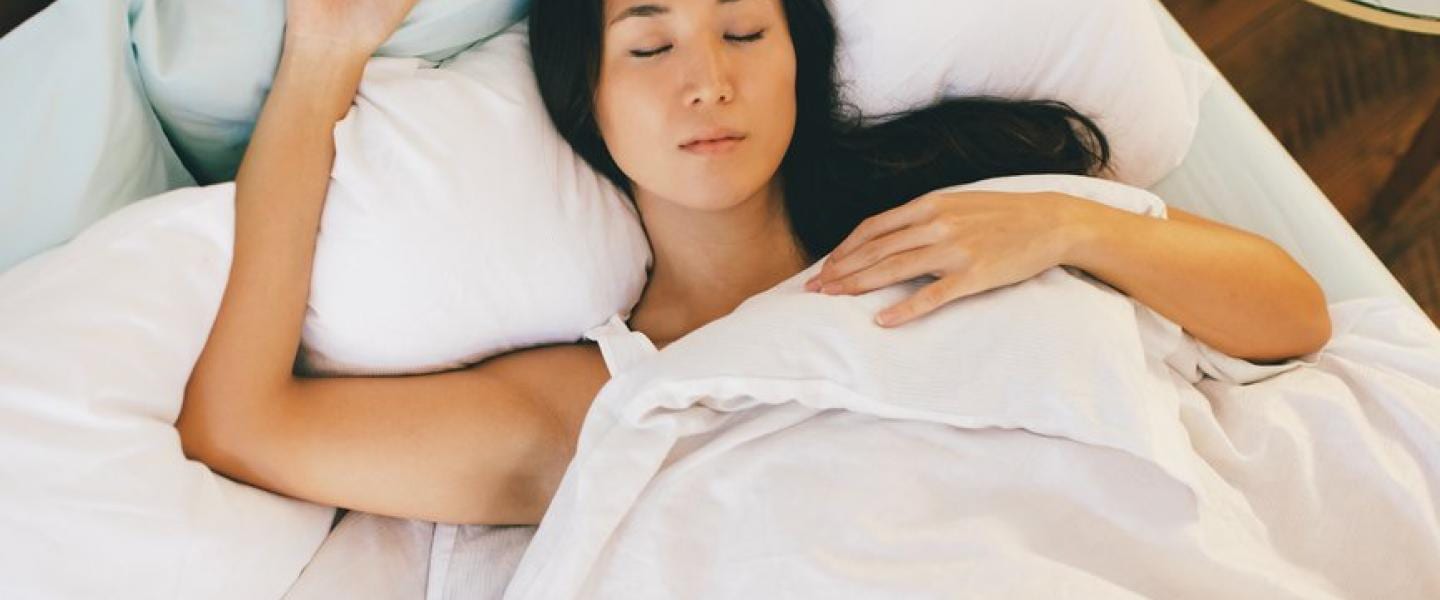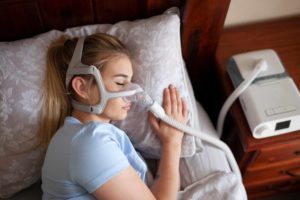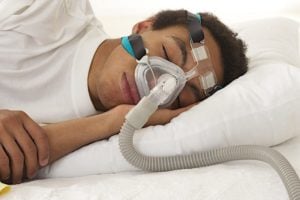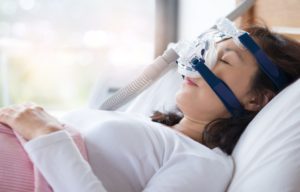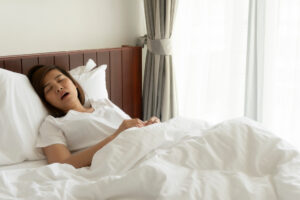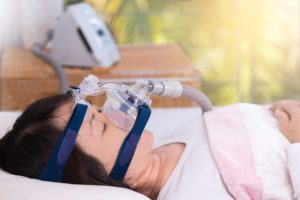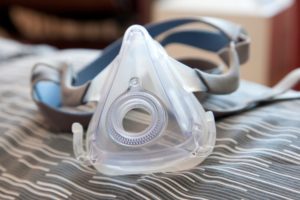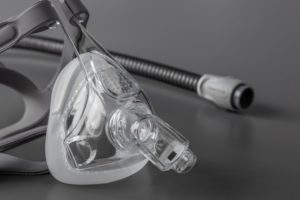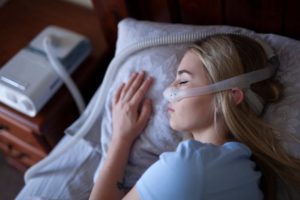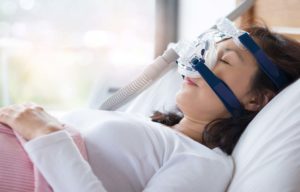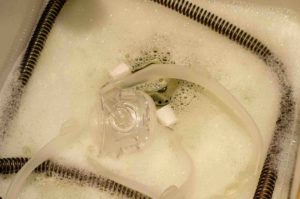When you buy through our links, we may earn a commission. Products or services may be offered by an affiliated entity. Learn more.
What Is a CPAP Machine?
If you or your bed partner have undiagnosed or untreated obstructive sleep apnea (OSA), getting a good night’s sleep might feel impossible. The good news is that OSA symptoms, including snoring and low-quality sleep, usually improve and sometimes disappear with regular use of a medical device called a continuous positive airway pressure (CPAP) machine.
How Does a CPAP Machine Work?
CPAP machines use pressurized air to keep a person’s airway open. These devices usually have three main components.
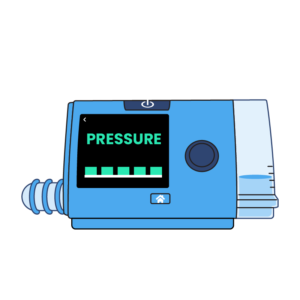

- Machine: CPAP machines contain a settings display, motor that generates pressurized air, and often a heated humidifier chamber. Depending on the model, devices may be as small as a brick or as large as a shoe box.
- Tube: CPAP machines deliver filtered, pressurized air taken from the room through a flexible plastic tube that is usually 6, 8, or 10 feet long.
- Mask: The tube connects to a mask that sits beneath the nose, fits over the nose, or seals around the nose and mouth. The mask is generally secured by adjustable straps.
There are several kinds of positive airway pressure (PAP) devices, but CPAP machines — which pump air at a continuous, customized pressure setting throughout the night — are typically the first treatment choice for people with moderate to severe obstructive sleep apnea.
Suspect You May Have Sleep Apnea?
Answer three questions to understand if you should be concerned.
What Is a CPAP Machine Used For?
By delivering pressurized air through the nostrils or the mouth, CPAP machines help prevent apneas and hypopneas—disruptions in breathing caused by collapsing or narrowing of the soft tissues in the nose and throat. Unlike some forms of mechanical ventilation, CPAP devices do not breathe for a person. Instead, CPAP users must breathe on their own, and as they do so, pressurized air from the machine acts as a stent to keep relaxed muscles and tissues from collapsing into the airway.
CPAP therapy is the gold standard treatment for obstructive sleep apnea. Research shows that treating OSA with CPAP therapy has many benefits. Day-to-day benefits include less sleepiness, clear thinking, and reduced appetite. Long-term benefits include reduced risk of heart diseases, diabetes, and dementia. Additionally, users also often experience:
- Normal breathing during sleep, with normal blood oxygen levels
- Improved blood pressure
- No snoring
- Increased alertness during the day
- Enhanced ability to focus and retain information
- Higher productivity
When used consistently, CPAP therapy is typically more effective than other OSA treatment options. The more severe your sleep apnea symptoms are, the more likely you are to benefit from using a CPAP machine.
While CPAP therapy is most commonly used to treat obstructive sleep apnea, it is also sometimes used to treat breathing-related problems caused by heart failure, respiratory failure, and obesity. For those that need supplemental oxygen, an oxygen concentrator can be added to the CPAP tubing through the use of an oxygen tubing adapter.
Common Issues With CPAP
Some people find that using a CPAP machine is challenging or uncomfortable, especially in the beginning. Some of the most commonly reported issues are:
- Mask discomfort
- Air leaks
- Dry mouth
- Dryness or irritation of the nose
- Bloating causes by swallowed air
Many people find CPAP therapy more tolerable after an initial period of adjustment. Acclimation to CPAP treatment normally includes trying different mask types or sizes to get the fit right. Using a high quality mask that fits well and sleeping on a specially designed pillow can also alleviate some of the difficulties of using a CPAP machine.
There are also ways to reduce the discomfort that can accompany CPAP use, including using nasal sprays, making changes to the humidifier setting, and practicing during the day so you can make adjustments when there is no pressure to sleep.
How Do I Know If I Need a CPAP Machine?
A medical provider can help you determine if you are a candidate for CPAP therapy. It’s important to talk to your doctor if you — or your bed partner — suspect that you have obstructive sleep apnea, as early treatment can help prevent long-term health problems. Symptoms of OSA include:
- Daytime sleepiness
- Snoring
- Pauses in breathing followed by gasps during sleep
- Feeling unrefreshed upon waking
- Difficulty paying attention or remembering information
- Morning headaches
In order to determine the severity of your OSA and the appropriateness of CPAP therapy as a treatment, your doctor will likely ask you to participate in an overnight sleep study in a laboratory. You may also be able to confirm the diagnosis of OSA using an at-home sleep apnea test.
Are There Alternatives to a CPAP Machine?
Doctors sometimes recommend other kinds of positive airway pressure devices to people who don’t improve with CPAP therapy or who find it very uncomfortable. These include auto-adjusting PAP (APAP) machines, which change air pressure depending on the needs of the sleeper, and bilevel PAP (BPAP) machines, which alter air pressure during inhalation and exhalation. Additional treatments that can help manage symptoms include:
- Wearing an oral appliance designed to keep your airway open
- Sleeping on your side
- Losing weight
- Avoiding alcohol and smoking
- Surgical treatments
Frequently Asked Questions
How long does it take a CPAP machine to work?
For many, using a CPAP machine immediately reduces snoring, improves sleep quality, and decreases daytime sleepiness. However, some of the benefits of CPAP therapy, such as reduced blood pressure, take more time.
Do I need to use my CPAP machine all night?
If you want to effectively treat your OSA, you should use your CPAP machine every time you sleep and for the whole time you are in bed. Many individuals with sleep apnea have worsening of the condition during REM sleep. Most REM sleep naturally occurs in the second half of the night. Lack of muscle tone is a feature of REM sleep, so supportive air pressure from a CPAP machine is especially beneficial during REM periods to ensure normal breathing.
How much does a CPAP machine cost?
CPAP machine prices range from $500 to more than $1,000. However, with a documented OSA diagnosis, most insurance providers cover the cost of CPAP machines and related supplies.

Still have questions? Ask our community!
Join our Sleep Care Community — a trusted hub of product specialists, sleep health professionals, and people just like you. Whether you’re searching for the perfect mattress or need expert sleep advice, we’ve got you covered. Get personalized guidance from the experts who know sleep best.
References
4 Sources
-
Malhotra, A. (2024, Feb 08). Obstructive sleep apnea: Overview of management in adults. In N. Collop & G. Finlay (Ed.). UpToDate.
https://www.uptodate.com/contents/obstructive-sleep-apnea-overview-of-management-in-adults -
Strohl, K. (2024, Jan). Patient education: Sleep apnea in adults (Beyond the basics). In N. Collop & G. Finlay (Ed.). UpToDate.
https://www.uptodate.com/contents/sleep-apnea-in-adults-beyond-the-basics -
A.D.A.M. Medical Encyclopedia. (2023, April 20). Positive airway pressure treatment. MedlinePlus.
https://medlineplus.gov/ency/article/001916.htm -
Hyzy, R. & McSparron, J. (2024, Jan). Noninvasive ventilation in adults with acute respiratory failure: Practical aspects of initiation. In P. Parsons & G. Finlay (Ed.). UpToDate.
https://www.uptodate.com/contents/noninvasive-ventilation-in-adults-with-acute-respiratory-failure-practical-aspects-of-initiation


